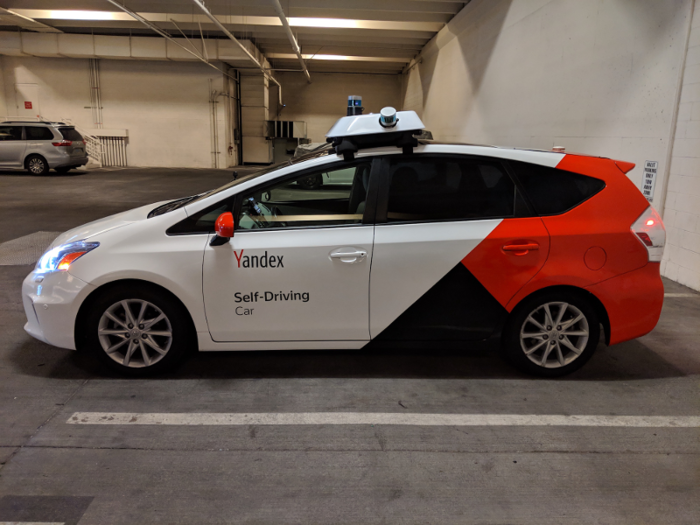





Had I not made a point of observing the car's performance, I likely would have forgotten that it was driving without human assistance. There was a safety driver in the driver's seat, but I did not see his hands did not touch the wheel at any point during our ride, and while I couldn’t see his feet, I had no reason to believe he was controlling the car’s braking and acceleration.

The car often drove slower than surrounding traffic (it briefly reached a top speed of around 45 mph), kept a safe distance behind the car ahead of it, and stayed within lane markings.
Aside from a few slightly abrupt stops, the ride didn’t have any major hiccups, and it suggested that Yandex’s technology could, at the least, be ready to carry passengers on short routes that won't present many challenges.
Of course, I would have to observe more than one ride to know that for sure, but limited-scale, autonomous ride-hailing and shuttle services from Waymo and startups like May Mobility and Optimus Ride have indicated that current autonomous driving technology can handle relatively small, geofenced areas.

The company is currently running two autonomous ride-hailing services in the Russian cities of Innopolis and Skolkovo (the former covers 0.8 square miles, and the latter covers 2.38 square miles). Yandex hopes to expand its ride-hailing services to Moscow and Kazan when it receives regulatory approval, which could happen in 2019, Polishchuk said.
He also said Yandex vehicles may be able to drive as well as a human in certain cities within four years.

"This is where all the competition will happen in the future," Polishchuk said. "This competition in self-driving is not about hardware. It's about software."

The company began working on autonomous driving technology in January 2017, Polishchuk said (there appears to be some internal disagreement over whether the work began in December 2016 or January 2017, based on conflicting press releases, but Polishchuk insisted the company's autonomous driving program began in January 2017), and by August 2018, the company launched what it says was the first autonomous ride-hailing service in Europe. Yandex has since given over 2,000 rides in autonomous vehicles.


"We are competing with Google for [search traffic in Russia] all the time, and we are beating them, so we know how to do this stuff," he said. "We are happy to compete."
 Stock markets stage strong rebound after 4 days of slump; Sensex rallies 599 pts
Stock markets stage strong rebound after 4 days of slump; Sensex rallies 599 pts
 Sustainable Transportation Alternatives
Sustainable Transportation Alternatives
 10 Foods you should avoid eating when in stress
10 Foods you should avoid eating when in stress

Copyright © 2024. Times Internet Limited. All rights reserved.For reprint rights. Times Syndication Service.